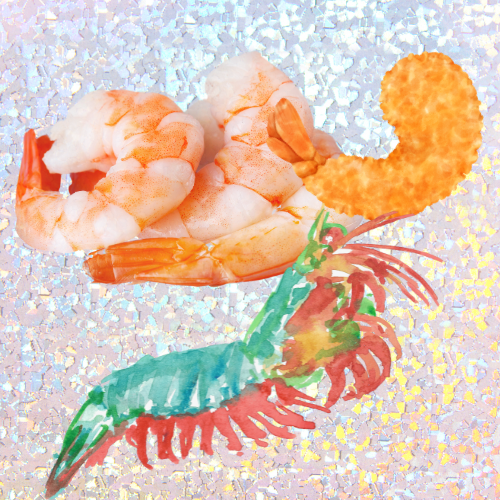

Earlier this year Red Lobster filed for bankruptcy due to people eating too much shrimp off of their “unlimited shrimp” promotion. Did that story seem fishy to anyone? Who was consuming copious amounts of shrimp at an outdated restaurant chain? Could they have ended the endless shrimp promotion before filing for bankruptcy?
The “shrimp promo” story was fake news. Red Lobster went out of business because cheap shrimp just isn’t as appealing as it used to be. A series of terrible business decisions, new ownership, a bad real estate arrangement, and a failure to rebrand all contributed to the bankruptcy. However, the unsung star of the story is actually, the shrimp.
Earlier this year a whistleblower, Joshua Farinella, for one of the major shellfish exporters shed light on the reality of how we get so much shrimp. This particular exporter mainly goes out budget grocery stores like Aldi or Walmart, but the industry generally uses the same practices unless a brand goes above.
Farinella was hired by Choice Canning after a career in the seafood industry but this was his highest offer yet, a salary of $300K to relocate to southern India to be an American face to report back that everything at the shrimp farm was up to code. Before working in seafood, Farinella had a troubled history with several DUI’s and writing fake checks. Eventually, in the seafood industry he had put his life together and estranged his family because they did not accept his marrying his African American wife, who came with him to India for the job.
Upon arrival, Farinella toured a facility where an uncountable number of mostly women worked. It was immediately evident things weren’t right as he saw the disgustingly unsanitary equipment, room temperature shrimp that should have been refrigerated, the working conditions in India’s 90-degree heat, tobacco sludge coating the floors, and worker’s bunkers infested with bed bugs.
Years ago, reports from the shrimp industry in Thailand and Burma showed workers are trafficked as slave labor into many shrimp farms, under the pretense of legitimate work. Most of the labor is women and children, sometimes children too short to reach their work stations. When this was brought to light there was a decrease in using Thailand as a shrimp source, which moved much of the industry to India. A lot of Asian wild-caught shrimp is also using modern slave labor, holding trafficked men captive on ships.
Early on Farinella started to suspect more than just unsanitary conditions when he received a late-night WhatsApp message from facility manager. A woman had been running through the site’s water treatment system. Later, a contractor would explain to Farinella that workers trying to escape over the eight-foot concrete walls used be a problem, but it had been fixed. The next day Farinella spoke to HR about the woman who had made it the gate but was turned back by guards. HR responded that the woman hadn’t wanted to escape, it was a misunderstanding.
Suspicions grew as Farinella continued to see tests from the shrimp show positive for antibiotics, which the company claimed to not be using. In fact, Choice Canning had gone the distance to get certification from regulating bodies to claim responsible farming methods. The FDA bans shrimp with antibiotics, however, only about 1% of the shrimp shipped to America gets inspected, compared to about 50% of the shrimp that enters the EU.
When a third-party did an audit of the facility, documenting the unsanitary conditions that would not meet FDA approval, Choice Canning told Farinella to ship it. When Farinella brought attention to the tests that showed antibiotics in the shrimp, the VP of sales at Choice Canning asked Farinella over whatsapp not to use the word “antibiotic” in an email, but to “use the word Oscar instead, lol”.
Later, revealed text messages about All-Natural packaged shrimp read like, “225 cases of Aldi are Oscar” with the response, “ship it”. In different instances, Aldi has tossed out huge quantities of shrimp because customers were complaining of the smell.
Unsurprisingly, the shrimp aren’t happy about these conditions either. Research shows that shrimps do feel pain. The reason the shrimp are given antibiotics is because they are farmed in squalid polluted, disease-infested ponds. The eyes of female shrimp are cut off, leaving them obviously disoriented. The practice of “eyestalk ablation” is thought to grow the shrimps ovaries, but also it leads to reduced egg quality.
Are There Solutions?
The Monterey Aquarium spent two years implementing a resource to help consumers find shrimp that aren’t gross. It states, “no wild shrimp fisheries are rated the best choice”. It very lengthy with many “good alternative choices” and is full of helpful suggestions like “buy farmed giant freshwater prawns from Bangladesh or giant tiger prawns from Myanmar”. The good news is that I read it for you.
Buy American shrimp. Overseas shrimp farming has hurt the American industry. Last year, shrimpers in Louisiana staged a protest at the state’s capital building, protesting their “starvation” wages. “We’d have to catch millions of pounds to survive with these shrimp prices,” a 51-year-old Louisiana shrimper told Civil Eats last spring.
Trick Question: Wild or Farmed Shrimp?
The setback with Wild shrimp is that the fishing nets that drag along the ocean floor kill a lot of other fish in the process. Advancements in this field have been made, such as a “turtle excluder devices”.
Farmed shrimp can be a good thing, done right. “With a well-designed system that includes good water quality and circulation, it’s possible to prevent disease without the use of chemicals or antibiotics, minimize inputs, and produce little to no waste. But the industry has struggled to get off the ground in the United States as it has wrestled with research and development while trying to compete with the cheap influx of destructively farmed imported shrimp.” – FoodPrint
How to Buy Shrimp:
- LOCATION. If the package doesn’t specify, there’s a reason
- FROZEN. In this case raw is not fresher. It’s likely previously frozen and imported, it also has no labeling. Unless from a trusted market, look for IQF on the label to determine it was flash frozen at time of harvest or catch
- SIZE. Words like “Jumbo” or “Medium are not standardized. Look at the shrimp count (eg 21-25) to see how many shrimp fit in the bag to determine size. The smaller the number range, the bigger the shrimp.
- ORGANIC: Organic only applies to farmed shrimp. Wild shrimp are not organic. The label is a good indicator of best practices, but generally it doesn’t really apply to shrimp – it’s there for marketing
- SEALS: As Joshua Ferrinella can tells us, quality seals are a “pay to play” label. The seals may help a little bit, but mostly are also on the label for marketing


